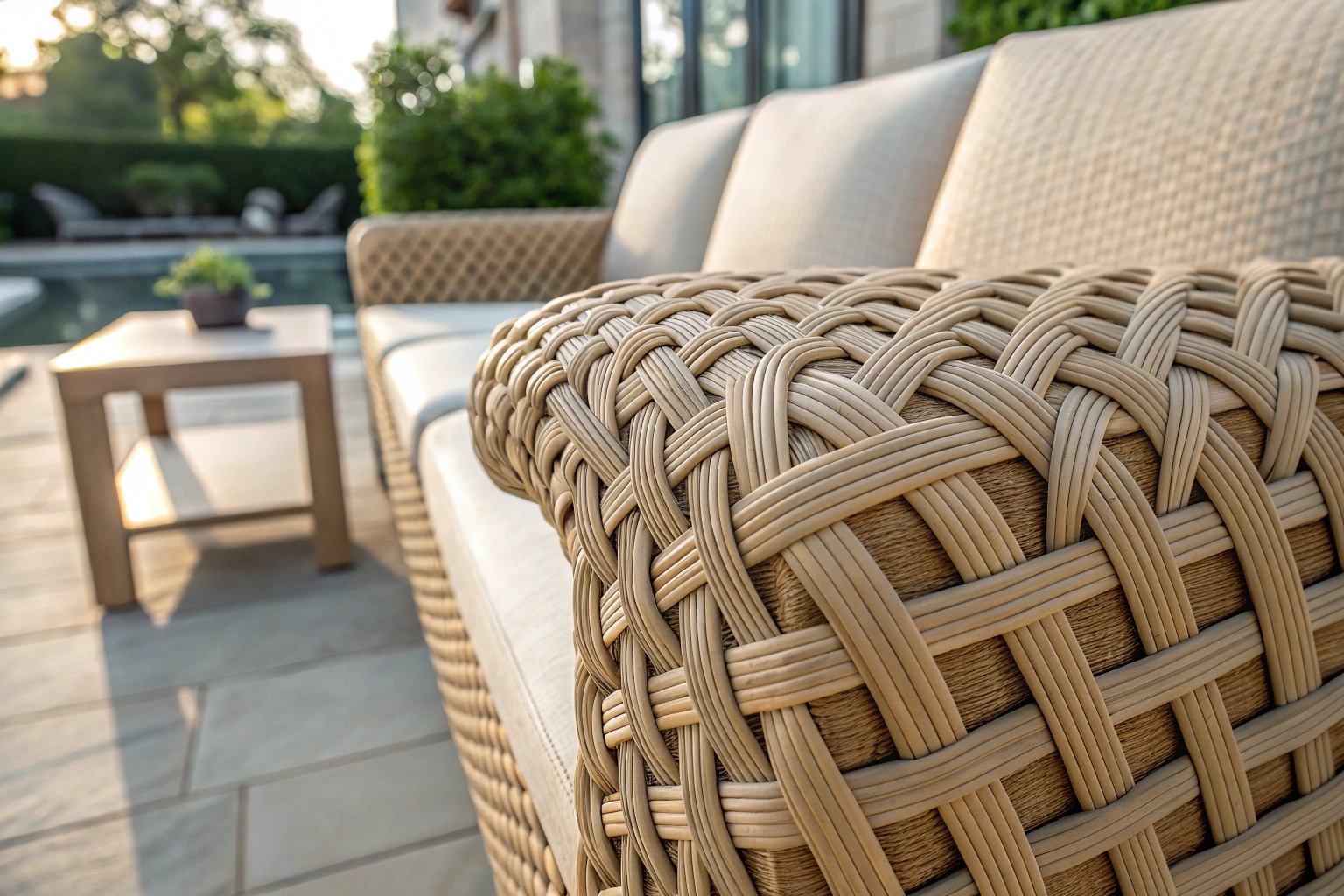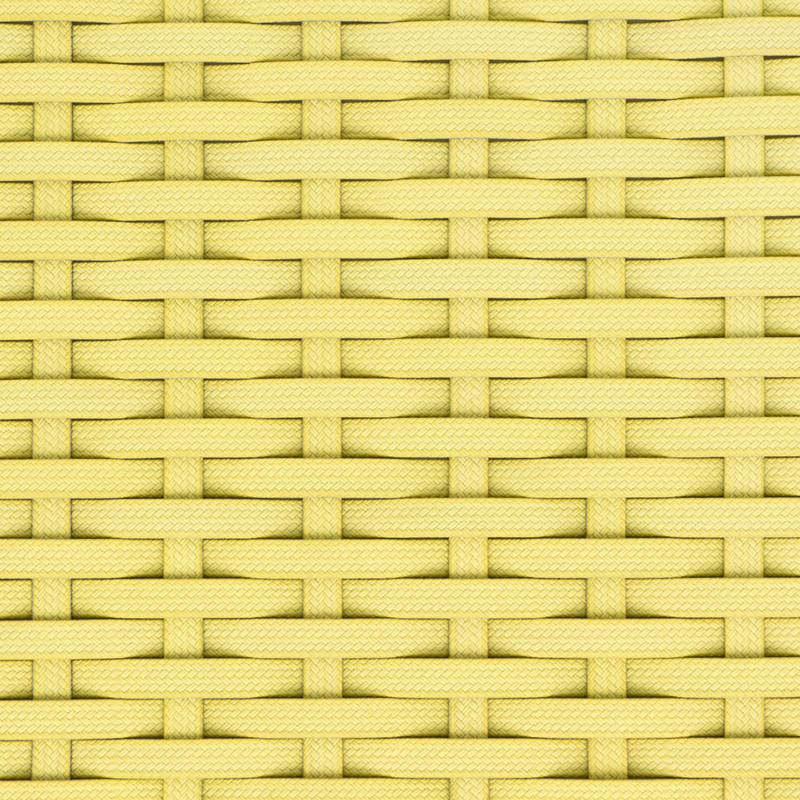PE rattan is a synthetic material that mimics natural rattan, commonly used for outdoor furniture. It combines durability with a sleek, modern look.
PE rattan, or polyethylene rattan, is made from high-density polyethylene fibers. It is durable, weather-resistant, and often used in the production of outdoor furniture.

Now that you understand what PE rattan is, let’s explore how it compares to other synthetic rattan materials like PU rattan and its overall benefits.
Is PU rattan better than PE rattan?
When comparing PE rattan and PU rattan, it's crucial to understand their differences. Let’s see which one truly stands out.
PU rattan is generally more flexible and lightweight, but PE rattan has superior weather resistance and is often the better choice for outdoor furniture.
While both PE and PU rattan have their advantages, they cater to different needs. PE rattan1 is ideal for outdoor furniture due to its higher UV resistance and weather durability. It’s better suited for long-term exposure to sunlight, rain, and extreme temperatures. On the other hand, PU rattan2 is often softer and more pliable, which makes it great for crafting intricate designs but doesn’t stand up as well to the elements. Here’s a deeper look into their key differences:
| Feature | PE Rattan | PU Rattan |
|---|---|---|
| Durability | High (UV resistant) | Medium (prone to wear over time) |
| Flexibility | Stiff and sturdy | More flexible and lightweight |
| Weather Resistance | Excellent (rain, sun, wind) | Poorer (damages quicker outdoors) |
| Cost | Generally more affordable | Can be more expensive |
| Eco-friendliness | Can be recycled, though not biodegradable | Not biodegradable |
PE rattan typically performs better outdoors. It can withstand harsher conditions, which is why it's a top choice for furniture exposed to sun and rain. However, PU rattan may be preferred for indoor or more decorative uses where flexibility and design are the priorities.
How long does PE rattan last?
You’re probably wondering how long PE rattan will last after exposure to the elements. Let’s break it down.
PE rattan can last anywhere from 5 to 10 years, depending on the quality of the material and how well it’s maintained.
PE rattan’s lifespan largely depends on the environmental conditions and how well it is maintained. For example, high-quality PE rattan used in premium outdoor furniture can last a decade or more with proper care. Factors such as regular cleaning, storing during extreme weather, and protecting from direct sunlight can significantly extend its life. However, exposure to harsh climates and neglectful maintenance can shorten its longevity.
Here are some factors that influence how long PE rattan lasts:
UV Exposure
Constant exposure to UV rays can degrade the material over time. However, high-quality PE rattan is UV stabilized, which makes it much more resistant to fading and cracking. As a result, the furniture retains its color and structure for a longer period, even under intense sun.
Temperature and Weather Conditions
Extreme temperatures, particularly very high or low temperatures, can affect the material. Constant freezing and thawing cycles can cause brittleness. On the other hand, high heat can cause the material to soften and lose its integrity. PE rattan generally holds up better in these conditions than other materials.
Maintenance
Regular cleaning and periodic treatment with protective sprays can help extend the life of PE rattan. Keeping it clean from dirt, mold, or algae can prevent discoloration and deterioration. Storing furniture indoors during winter also keeps it from the damaging effects of ice and snow.
Is PE rattan eco-friendly?
With increasing concerns over sustainability, you may wonder if PE rattan is an environmentally friendly choice. Let’s find out.
PE rattan is not fully biodegradable but can be recycled, which makes it a more eco-friendly option compared to non-recyclable materials.
While PE rattan is more eco-friendly than many other synthetic materials, it is not completely free from environmental impact. One of the major concerns is that PE rattan is made from plastic, specifically polyethylene, which is derived from petroleum. However, polyethylene is a highly recyclable material, which means that, with proper recycling practices, it can be reused to create new products.
Recyclability
The key advantage of PE rattan in terms of sustainability is that it can be recycled into new products, including more outdoor furniture materials, construction items, and even clothing. This reduces the environmental footprint compared to non-recyclable materials like PVC. Many manufacturers now recycle used PE rattan, helping reduce waste and encourage a more circular economy.
Biodegradability
While PE rattan can be recycled, it is not biodegradable. This means if it’s not disposed of properly, it could end up in landfills, where it may take hundreds of years to break down. This is why proper disposal and recycling programs are important for keeping PE rattan out of waste streams.
Environmental Impact
Manufacturing PE rattan does require energy, and the production process may emit greenhouse gases. However, many manufacturers are now using more energy-efficient techniques to reduce the carbon footprint. In comparison to traditional rattan, which requires deforestation for harvest, PE rattan provides a sustainable alternative, as it is produced without harming natural forests.
Conclusion
PE rattan is a durable, eco-friendly, and versatile material, ideal for long-lasting outdoor furniture. Proper care ensures its longevity, making it a worthwhile investment.


print.jpg)
2-1.png)